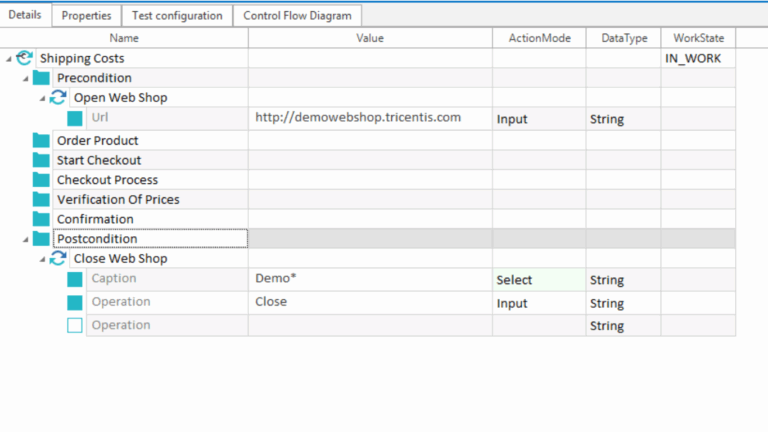SQL (Structured Query Language) is an essential skill for data scientists, as it is the primary tool used for interacting with databases, querying data, and performing data manipulation tasks. During a data science interview, your SQL knowledge will likely be tested through a series of questions that assess your ability to retrieve, manipulate, and analyze data efficiently. In this blog, we will cover some of the top SQL interview questions you should know if you’re preparing for a data science role.
What is SQL, and Why is it Important in Data Science?
Answer:
SQL stands for Structured Query Language and is a standardized programming language used for managing and manipulating relational databases. It is essential in data science because it allows data scientists to extract and manipulate data stored in databases. SQL is crucial for data retrieval, which is often the first step in data analysis, and it is also used to perform aggregations, filtering, joins, and other data transformations that are key to preparing data for analysis.
Follow-up:
Explain the difference between SQL and NoSQL databases and when each is appropriate.
What are the Different Types of Joins in SQL?
Answer:
SQL joins are used to combine rows from two or more tables based on a related column between them. The different types of joins in SQL are:
- INNER JOIN: Returns only the rows where there is a match in both tables.
- LEFT (OUTER) JOIN: Returns all the rows from the left table and the matched rows from the right table. If there is no match, NULL values are returned for columns from the right table.
- RIGHT (OUTER) JOIN: Returns all the rows from the right table and the matched rows from the left table. If there is no match, NULL values are returned for columns from the left table.
- FULL (OUTER) JOIN: Returns all rows when there is a match in either left or right table. If there is no match, NULL values are returned for columns from either table.
- CROSS JOIN: Returns the Cartesian product of the two tables, meaning it pairs every row from the first table with every row from the second table.
- SELF JOIN: A self-join is a regular join but the table is joined with itself.
Example Question:
Write a query that performs an inner join between two tables, employees and departments, where the department_id matches in both tables.
Example Answer:
sqlCopy codeSELECT employees.employee_id, employees.first_name, departments.department_name
FROM employees
INNER JOIN departments ON employees.department_id = departments.department_id;
How Do You Use the GROUP BY Clause in SQL?
Answer:
The GROUP BY clause in SQL is used to group rows that have the same values in specified columns into summary rows, such as finding the sum, average, count, etc., for each group. It is often used with aggregate functions like COUNT, SUM, AVG, MAX, and MIN.
Example Question:
Write a query to find the total sales for each product category from a sales table.
Example Answer:
sqlCopy codeSELECT category_id, SUM(sales_amount) AS total_sales
FROM sales
GROUP BY category_id;
Follow-up:
How would you filter the results of a GROUP BY query to only include groups with a total sales amount greater than 10,000?
Example Answer:
sqlCopy codeSELECT category_id, SUM(sales_amount) AS total_sales
FROM sales
GROUP BY category_id
HAVING SUM(sales_amount) > 10000;
What is a Subquery, and How is it Used?
Answer:
A subquery is a query within another SQL query and is embedded within the WHERE, FROM, SELECT, or HAVING clauses. Subqueries can be used to return data that will be used in the main query as a condition to further restrict the data to be retrieved.
Example Question:
Write a query to find the names of employees who earn more than the average salary in their department.
Example Answer:
sqlCopy codeSELECT employee_name
FROM employees
WHERE salary > (SELECT AVG(salary) FROM employees WHERE department_id = employees.department_id);
Follow-up:
Explain the difference between correlated and non-correlated subqueries.
Example Answer:
- Correlated Subquery: A subquery that uses values from the outer query. It is executed once for each row processed by the outer query.
- Non-correlated Subquery: A subquery that is independent of the outer query and can be executed on its own. It is executed only once and its result is used by the outer query.
What is the Difference Between WHERE and HAVING Clauses in SQL?
Answer:
The WHERE clause is used to filter rows before any groupings are made, while the HAVING clause is used to filter groups after the GROUP BY clause has been applied.
Example Question:
How would you use both WHERE and HAVING in a query to filter data?
Example Answer:
sqlCopy codeSELECT department_id, COUNT(*) AS employee_count
FROM employees
WHERE status = 'Active'
GROUP BY department_id
HAVING COUNT(*) > 10;
In this query, the WHERE clause filters the rows where the status is ‘Active’, and the HAVING clause further filters the groups to include only those departments with more than 10 employees.
Explain Window Functions and Provide an Example
Answer:
Window functions in SQL perform calculations across a set of table rows related to the current row. Unlike aggregate functions, they do not collapse the rows into a single output row. Examples of window functions include ROW_NUMBER(), RANK(), DENSE_RANK(), and NTILE().
Example Question:
Write a query that assigns a rank to employees based on their salary within their department.
Example Answer:
sqlCopy codeSELECT employee_id, department_id, salary,
RANK() OVER (PARTITION BY department_id ORDER BY salary DESC) AS salary_rank
FROM employees;
Follow-up:
What is the difference between RANK() and DENSE_RANK()?
Example Answer:
RANK()assigns a rank to each row within the partition, with gaps in ranking if there are ties.DENSE_RANK()assigns a rank to each row within the partition, but without gaps; if two rows are tied, they receive the same rank, and the next rank is the immediate subsequent number.
How Can You Optimize SQL Queries for Performance?
Answer:
Optimizing SQL queries involves several techniques to ensure that queries run efficiently. Some common optimization strategies include:
- Indexing: Creating indexes on columns that are frequently used in
WHERE,JOIN, andORDER BYclauses can speed up query execution. - *Avoiding SELECT : Only retrieve the columns you need, as selecting all columns can increase the amount of data processed and transferred.
- Query Execution Plan: Use
EXPLAINorEXPLAIN ANALYZEto review the query execution plan and identify bottlenecks. - Joins: Ensure that joins are optimized by indexing the columns being joined and by selecting the most efficient join type for the query.
- Subqueries: Where possible, avoid subqueries that can be replaced with joins, as joins are generally more efficient.
Example Question:
Explain how you would optimize a slow-running query that retrieves the top 10 highest-paid employees.
Example Answer:
First, ensure that there is an index on the salary column to speed up the sorting operation. Then, instead of using a subquery or complex join, you can use the LIMIT clause with an ORDER BY:
sqlCopy codeSELECT employee_id, employee_name, salary
FROM employees
ORDER BY salary DESC
LIMIT 10;
What is Normalization? Why is it Important?
Answer:
Normalization is the process of organizing data in a database to reduce redundancy and improve data integrity. It involves dividing large tables into smaller, related tables and defining relationships between them. The main normal forms include:
- 1NF (First Normal Form): Eliminates duplicate columns from the same table.
- 2NF (Second Normal Form): Ensures that all non-key attributes are fully functionally dependent on the primary key.
- 3NF (Third Normal Form): Removes transitive dependencies, ensuring that non-key columns do not depend on other non-key columns.
Normalization is crucial for maintaining data integrity, ensuring that the database is easy to maintain and that queries are more efficient.
Follow-up:
Discuss situations where denormalization might be preferred.
Example Answer:
Denormalization might be preferred in scenarios where read performance is critical, and the database needs to return data quickly by reducing the need for complex joins. This approach can be beneficial in OLAP (Online Analytical Processing) systems where data redundancy is acceptable to achieve faster query performance.
Explain the Use of UNION and UNION ALL
Answer:
The UNION operator is used to combine the results of two or more SELECT queries into a single result set. It removes duplicate rows from the result. UNION ALL does the same but includes duplicates.
Example Question:
Write a query that combines the results of two tables, employees and contractors, showing all unique names.
Example Answer:
sqlCopy codeSELECT name FROM employees
UNION
SELECT name FROM contractors;
Follow-up:
If duplicates are acceptable, how would you modify the query?
Example Answer:
sqlCopy codeSELECT name FROM employees
UNION ALL
SELECT name FROM contractors;
What are Common Table Expressions (CTEs) and When Should You Use Them?
Answer:
A Common Table Expression (CTE) is a temporary result set that can be referenced within a SELECT, INSERT, UPDATE, or DELETE statement. CTEs are often used to simplify complex queries, especially those involving recursive queries or when the same subquery is used multiple times within a query.
Example Question:
Write a CTE that calculates the cumulative sales for each employee.
Example Answer:
sqlCopy codeWITH CumulativeSales AS (
SELECT employee_id, sales_amount,
SUM(sales_amount) OVER (ORDER BY employee_id) AS cumulative_sales
FROM sales
)
SELECT * FROM CumulativeSales;
Follow-up:
Explain the advantages of using CTEs over subqueries.
Example Answer:
CTEs make the query easier to read and maintain, especially when dealing with recursive queries or when the same subquery logic needs to be reused multiple times within the main query.
Conclusion
SQL is an indispensable tool for data scientists, and having a solid grasp of SQL fundamentals is essential for success in data science interviews. The questions covered in this blog highlight some of the most critical aspects of SQL that you are likely to encounter during an interview. By preparing for these questions and practicing SQL regularly, you can improve your chances of acing your data science interviews and securing a role that requires strong SQL skills.





























3 Responses